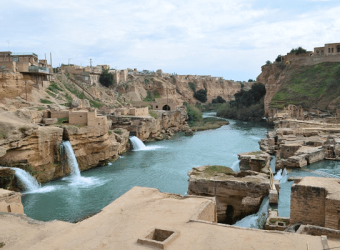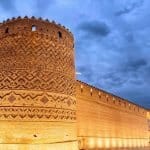The Shushtar Historical Hydraulic System, located in the historic city of Shushtar in Khuzestan Province, is one of the most remarkable feats of ancient engineering in Iran. Dating back to the Sassanid era (3rd century CE), this extensive network of dams, canals, tunnels, bridges, and watermills was ingeniously designed to channel and control water from the Karun River, supporting agriculture, industry, and urban life.
Recognized as a UNESCO World Heritage Site in 2009, the system reflects centuries of innovation and sustainable urban planning. It highlights how Persian engineers skillfully combined technical knowledge with practical solutions to create a water management network that has endured for over 1,700 years.
Highlights of the Site
Gargar Bridge-Dam: The main diversion structure that channels water into Shushtar’s complex canal system.
Watermills and Factories: Some still operational today, these mills powered local industries, from grinding grain to irrigation.
Canals and Tunnels: A sophisticated network distributing water efficiently across the city and farmland.
Historic Bridges: Stone bridges integrated into the hydraulic system, showcasing advanced Persian architectural techniques.
Visitors can explore the canals, walk across ancient bridges, and see working watermills, offering a tangible connection to the ingenuity of Persian engineers.
By Car: Shushtar is approximately 90 km from Ahvaz, linked via a well-maintained highway. Driving allows flexibility to explore the site and the surrounding areas.
By Public Transport: Buses and shared taxis run regularly between Ahvaz and Shushtar, with a travel time of roughly 1.5 hours.
By Air: The nearest airport is Ahvaz International Airport (IATA: AWZ). Domestic flights connect Ahvaz to Tehran, Shiraz, and Isfahan. From the airport, taxis or buses take visitors to Shushtar.
By Train: The nearest railway station is in Ahvaz. From there, visitors can continue by bus or taxi to reach Shushtar.
he best time to explore the Shushtar Historical Hydraulic System is during spring (March–May) and autumn (October–November), when the weather is mild, skies are clear, and the surrounding landscapes are at their most vibrant. These seasons allow visitors to fully enjoy walking along the canals, crossing historic bridges, and photographing the cascading waterfalls without the discomfort of extreme temperatures.






